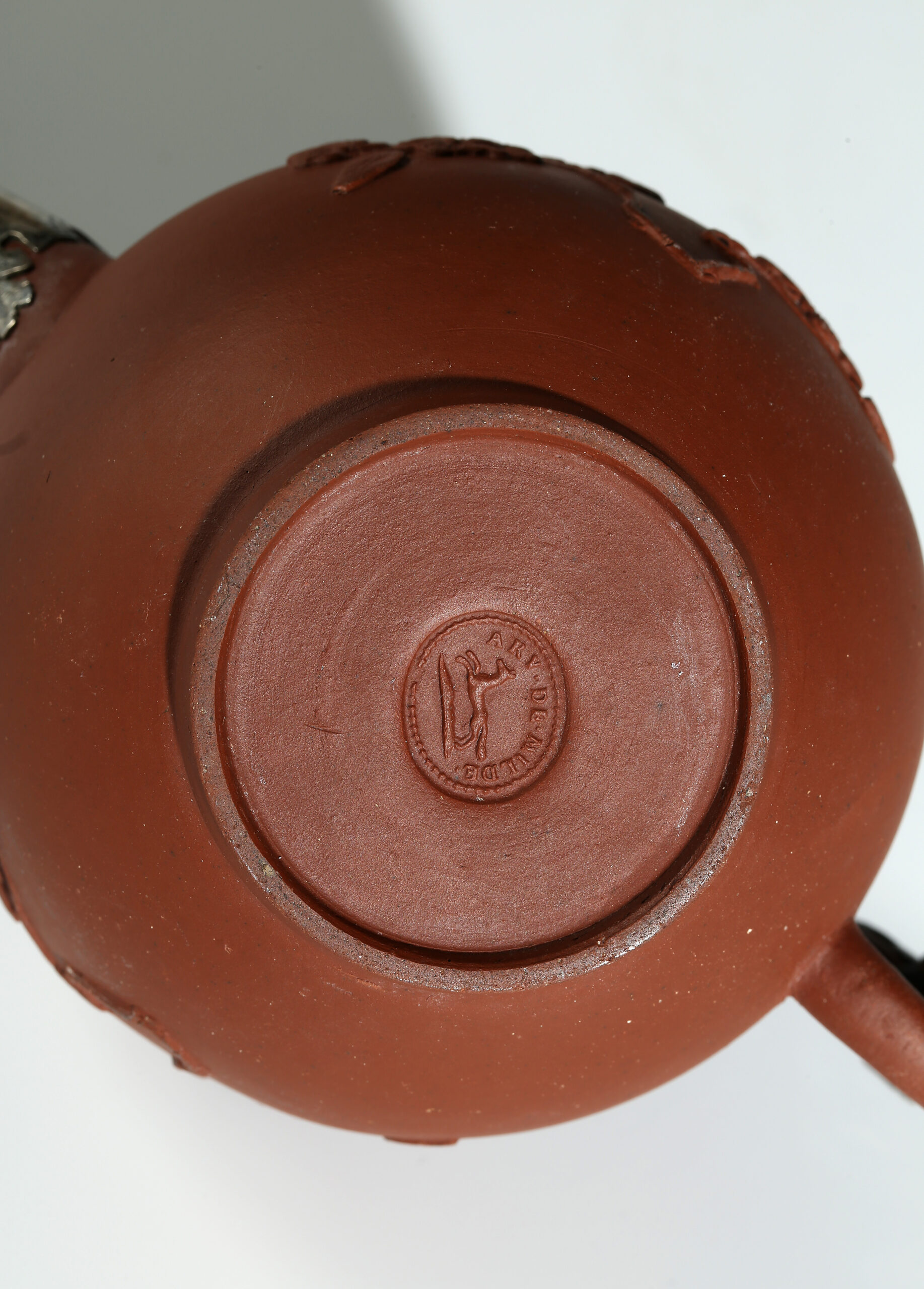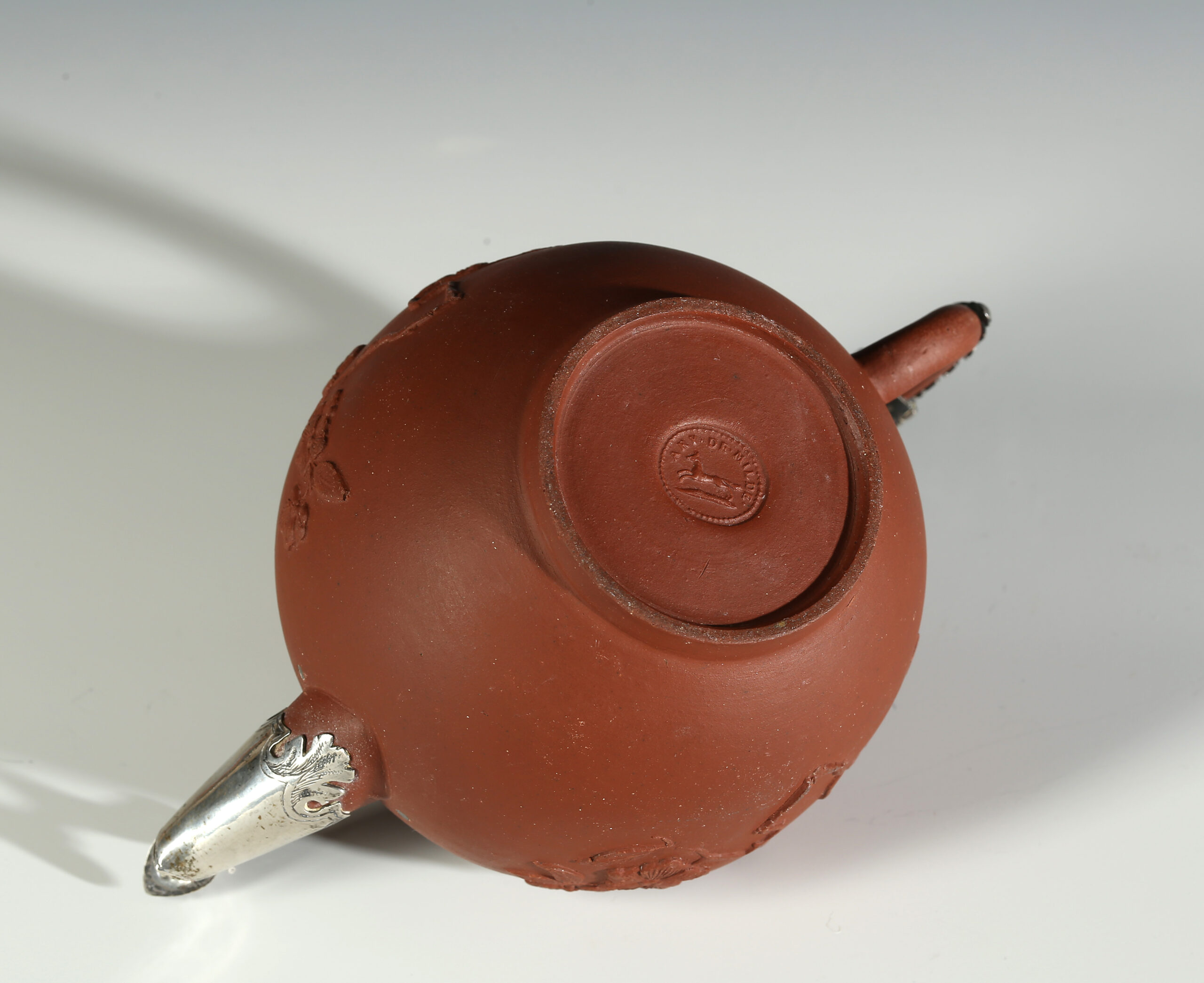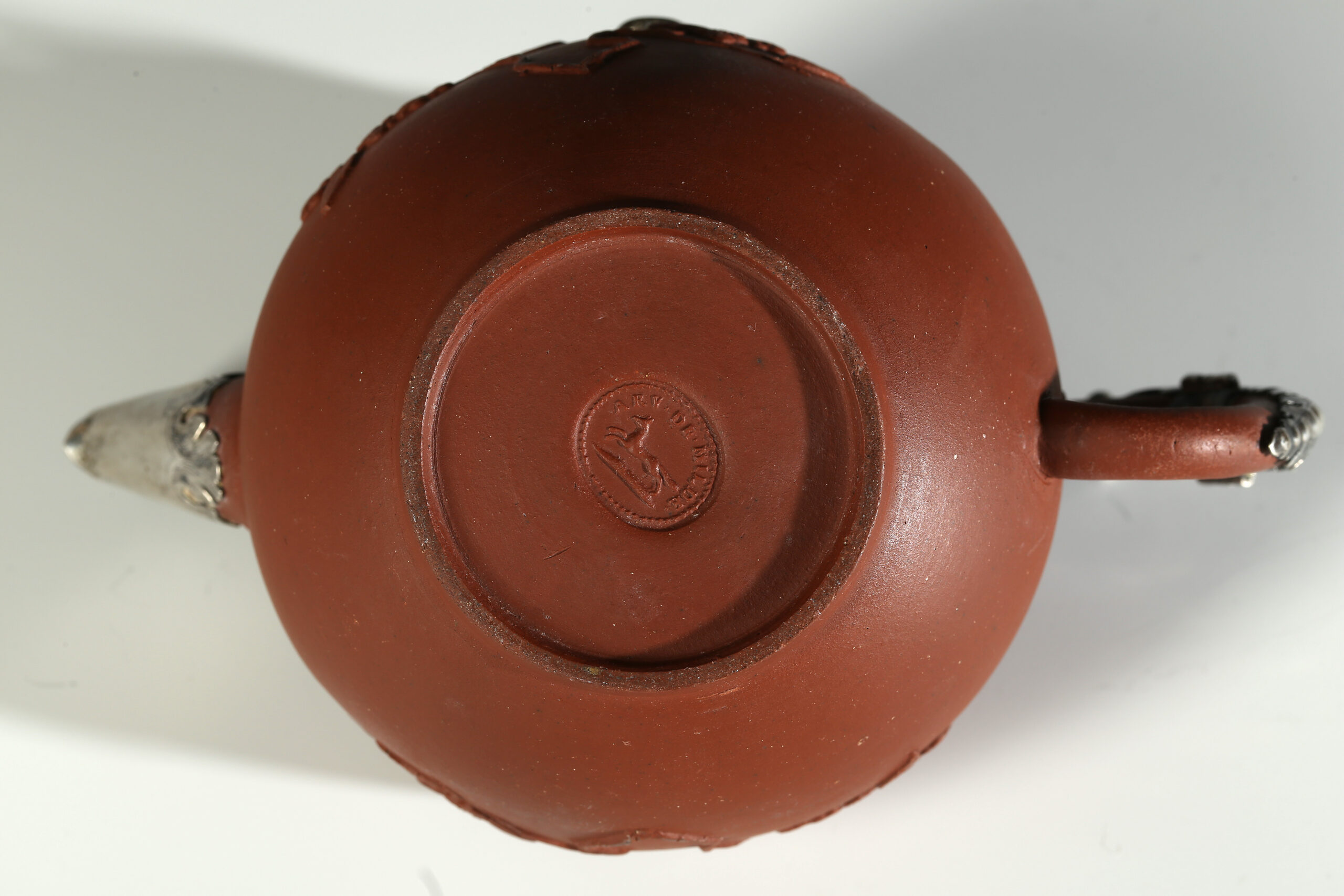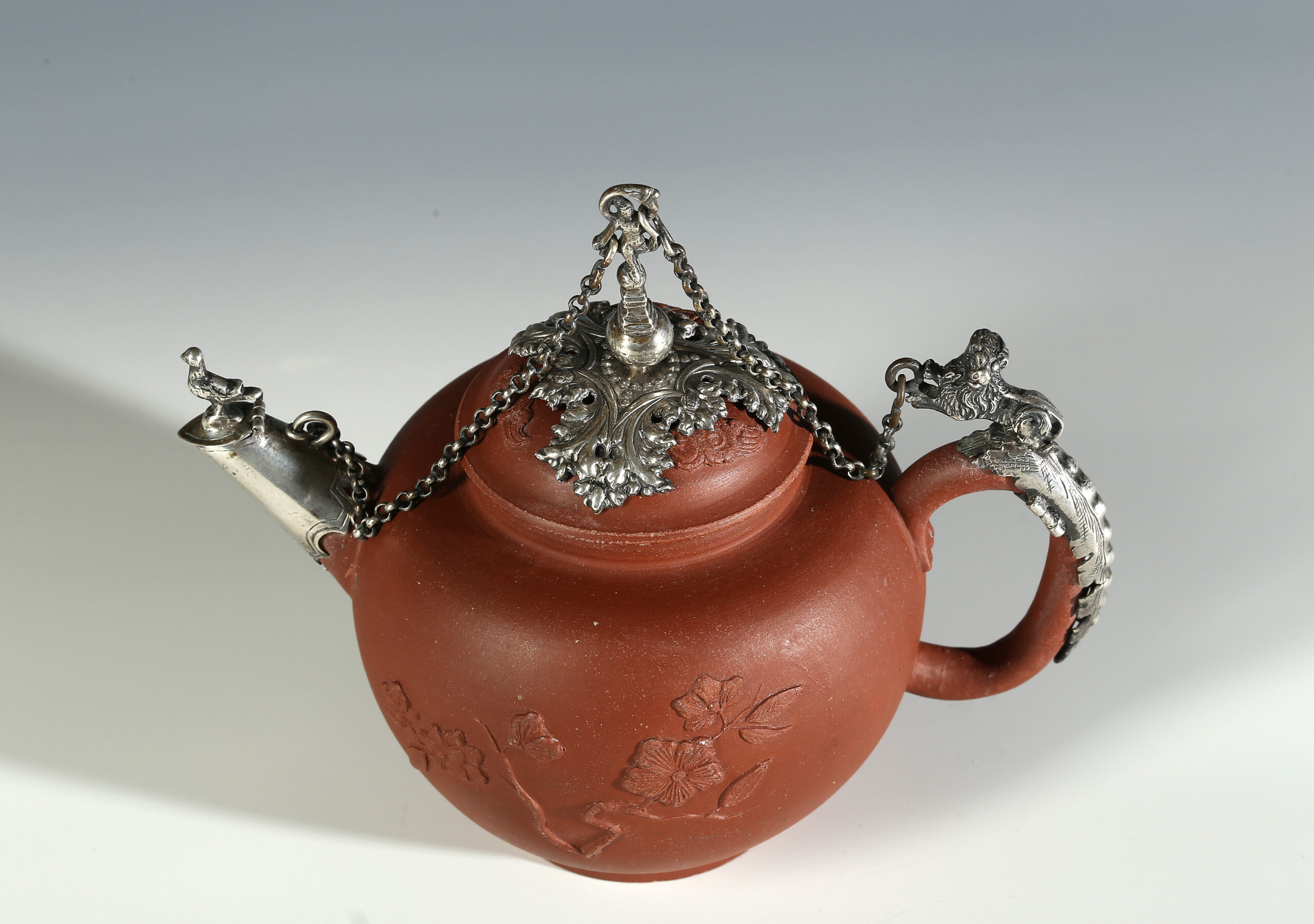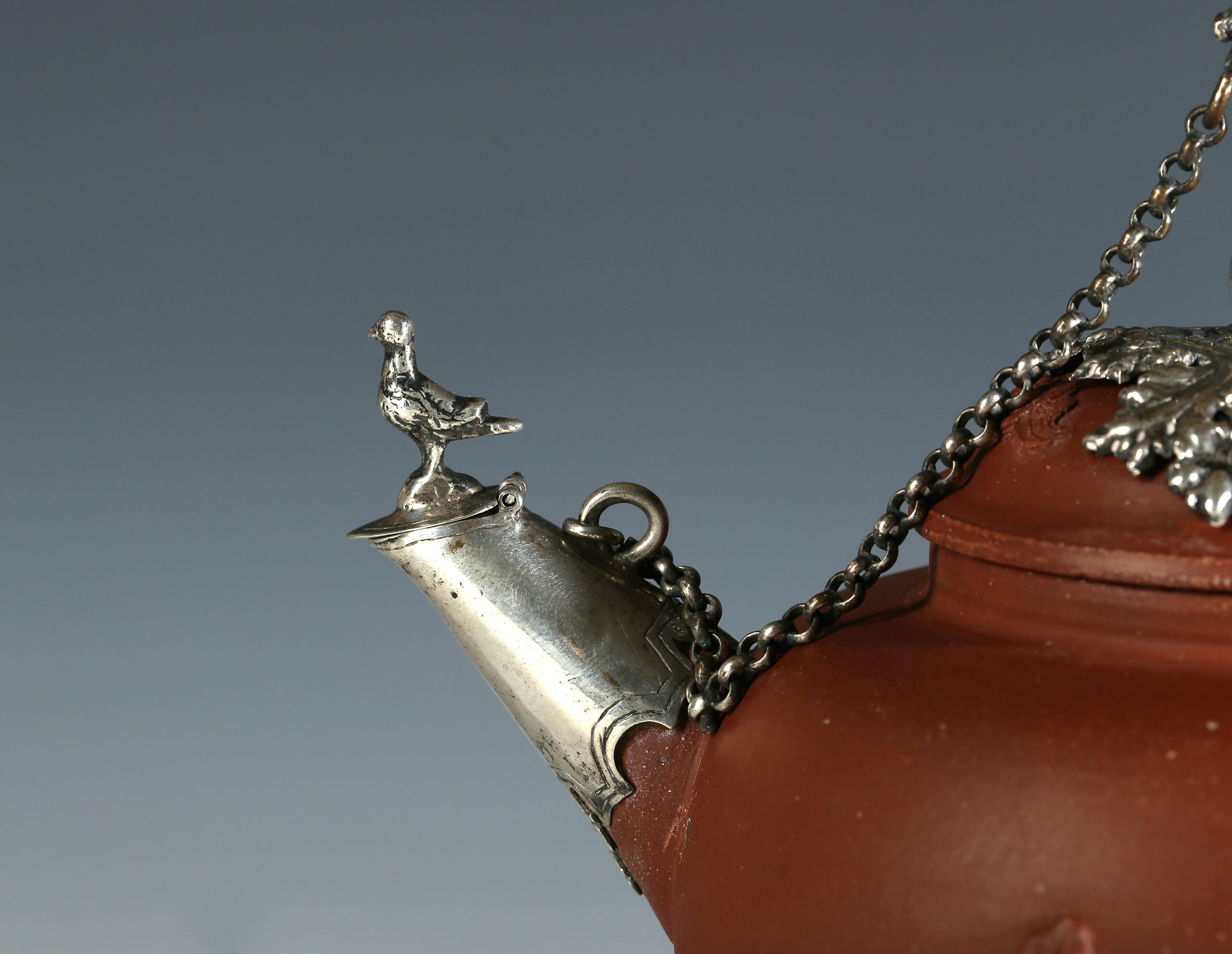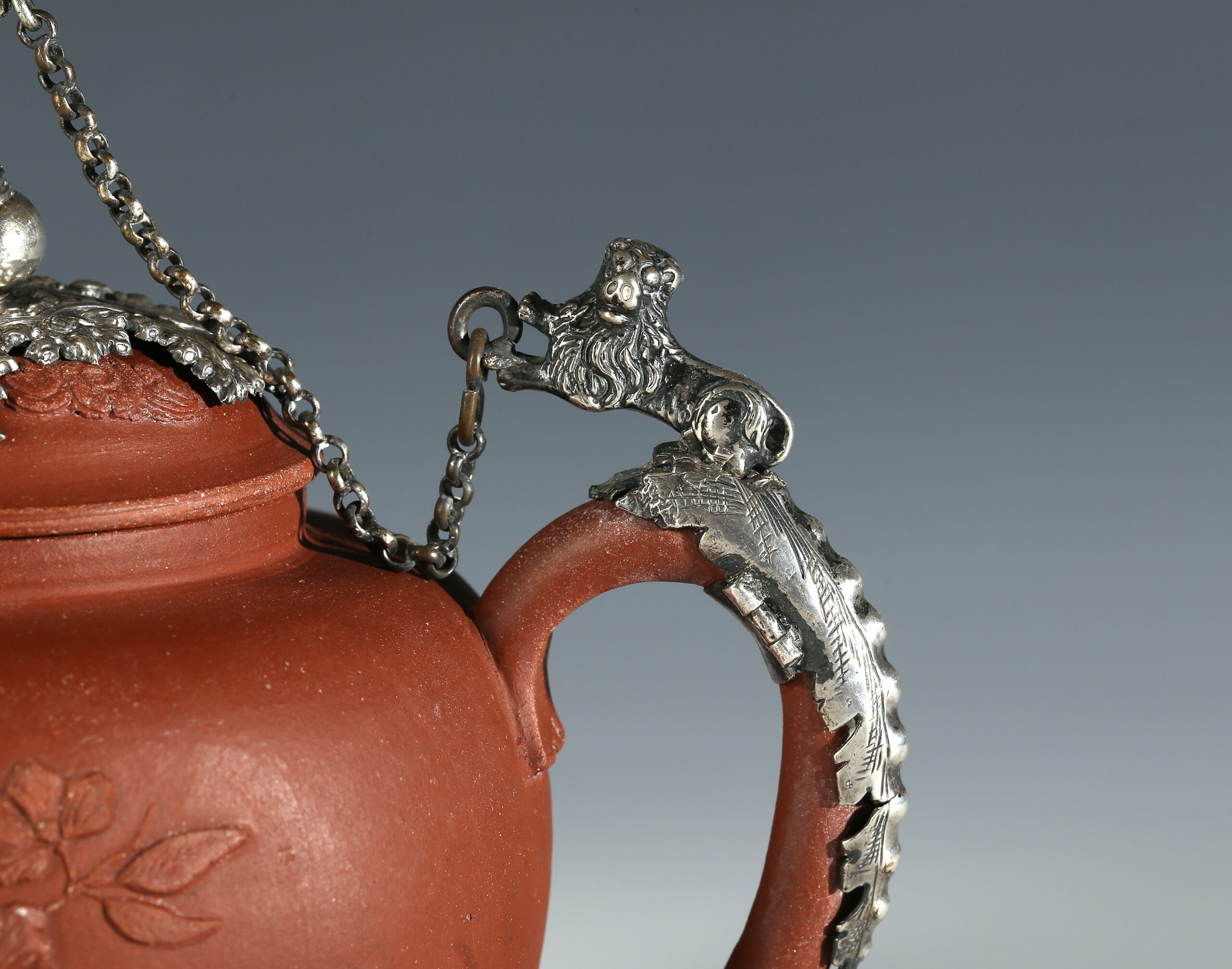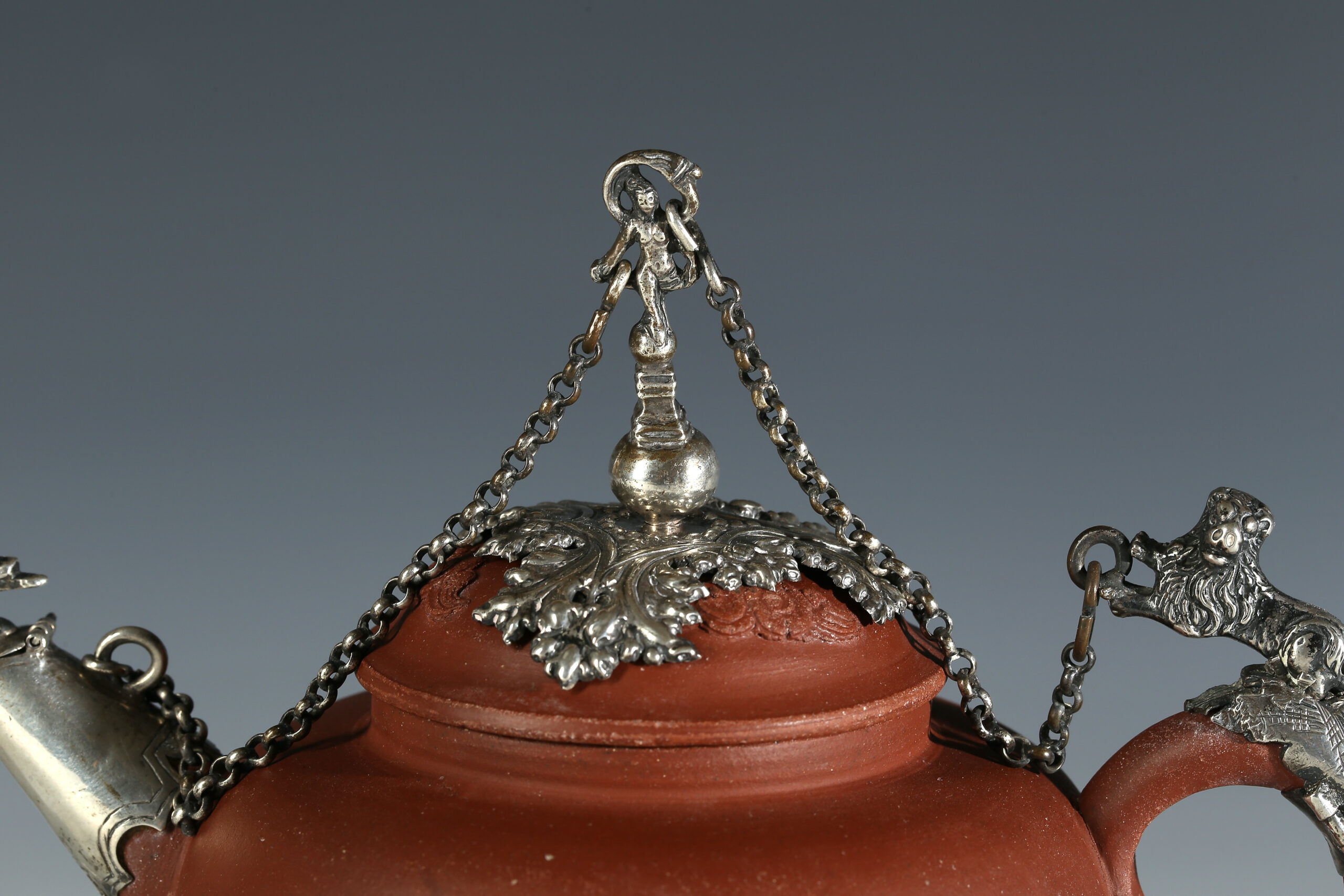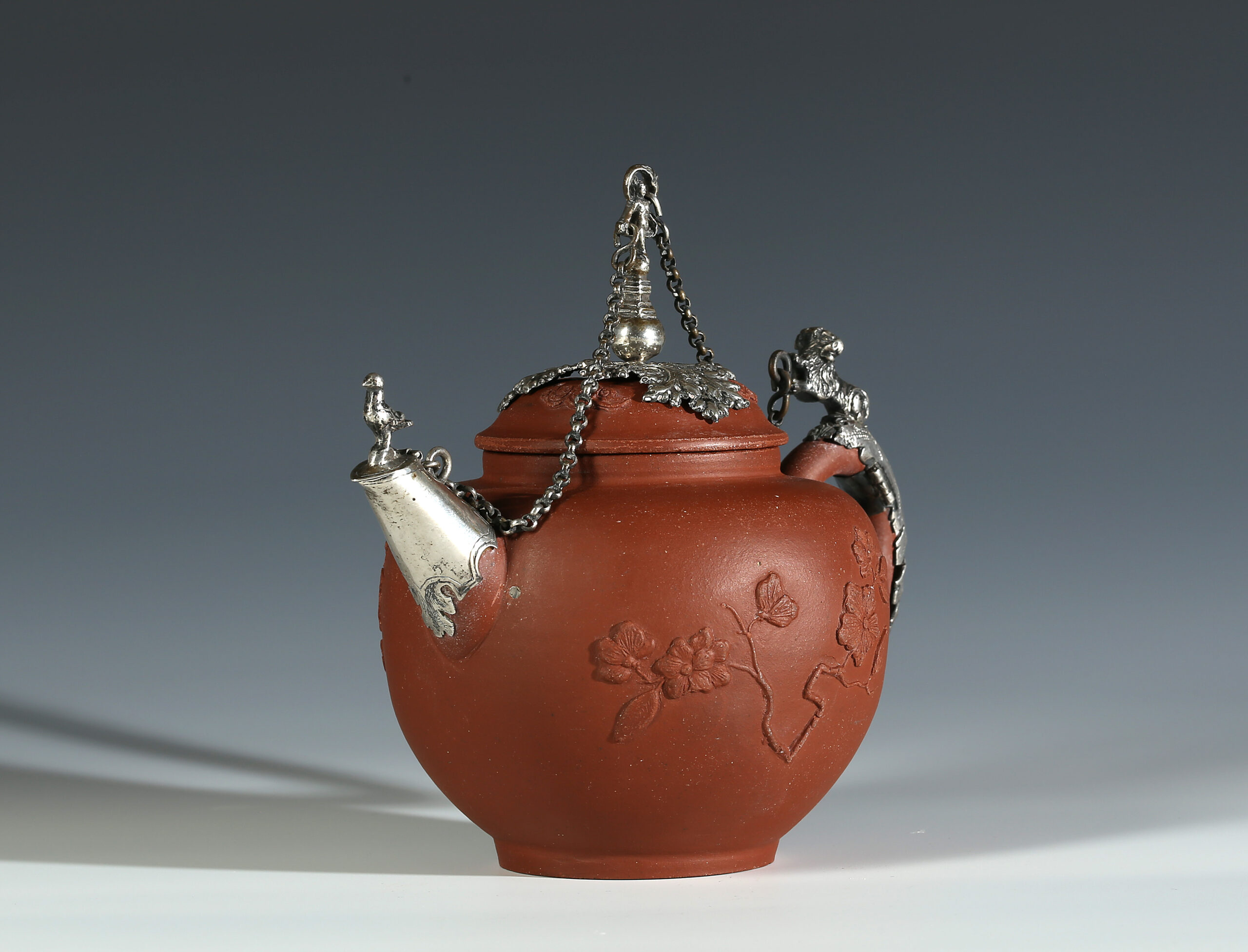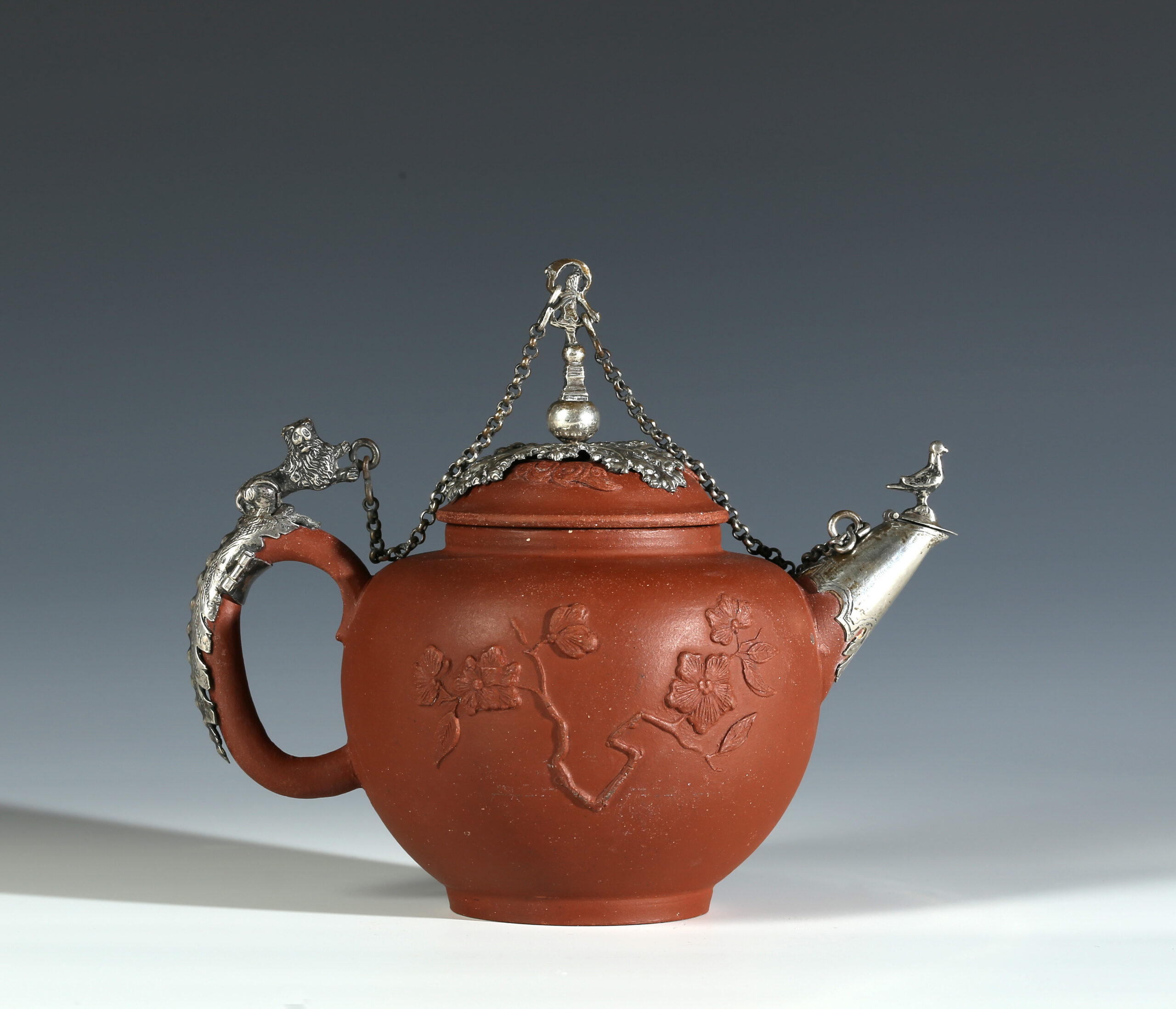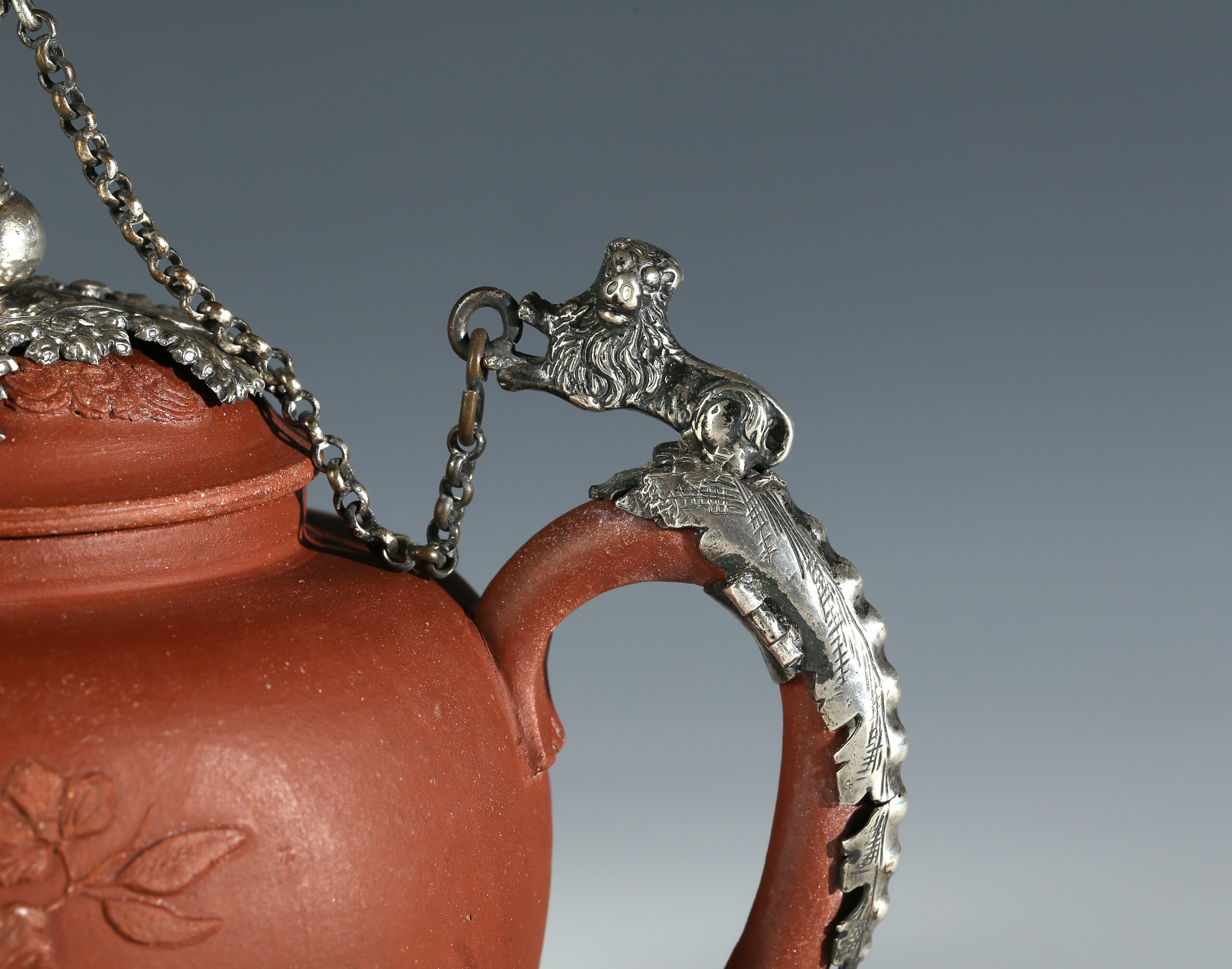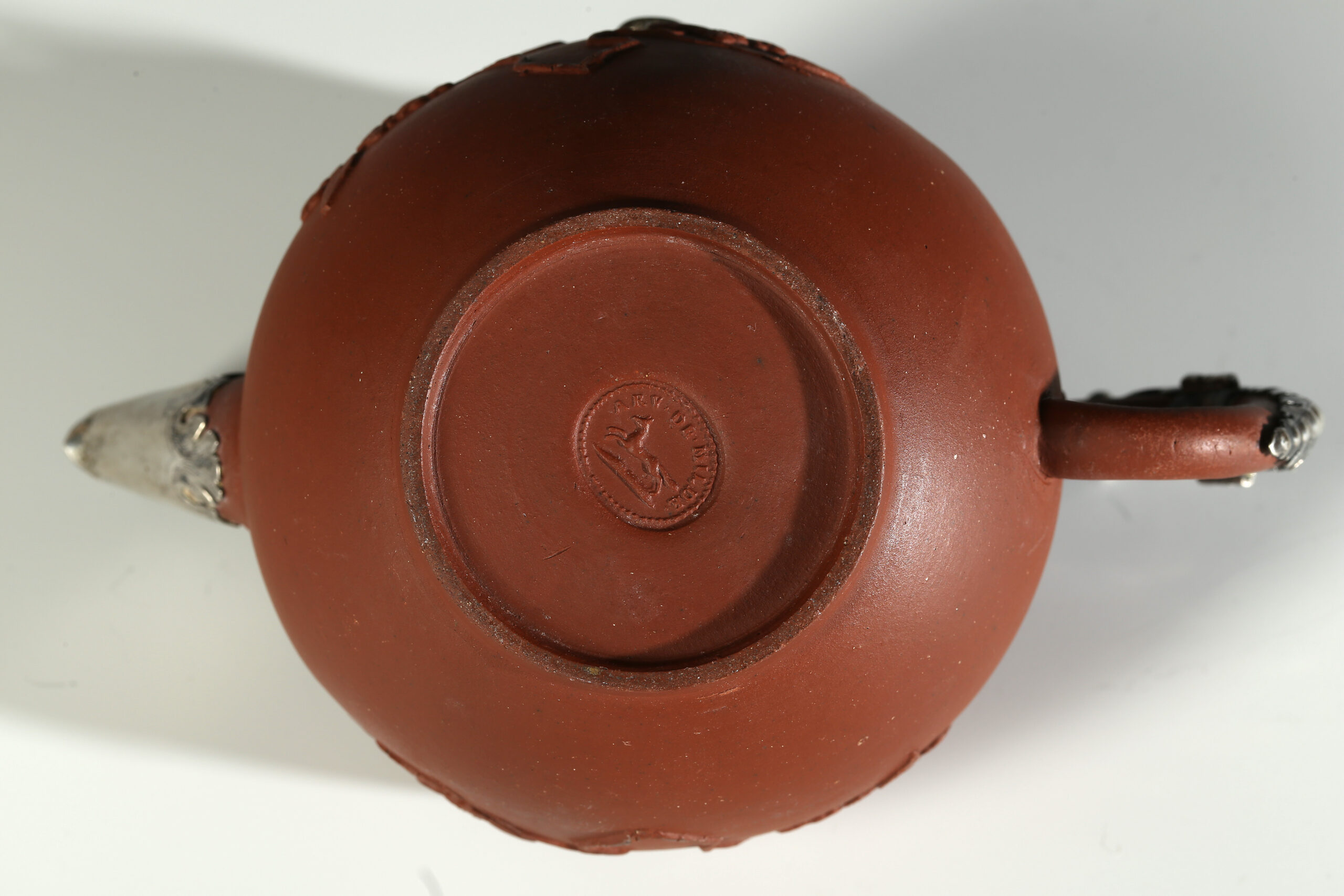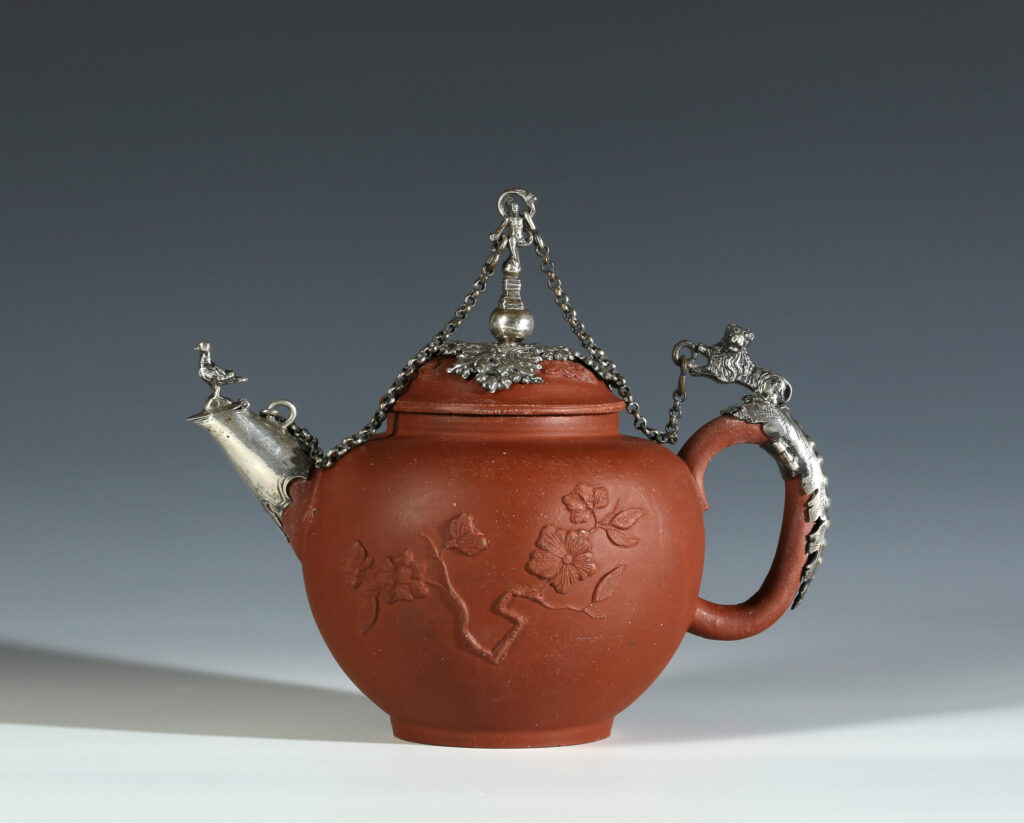
Applied in relief with floral sprigs on each side of the wheel-thrown body.
The Dutch silver mounts are unmarked and unusually elaborate. Similar acanthus leaf mounts can also be found in gilt metal on Yixing teapots mounted in The Netherlands at this period. A domed metal strainer has been fitted inside the teapot and is attached with two pins drilled on either side of the spout.
From around 1670 Delft potters experimented with what they called ‘rode Delftse trekpotjes’ in imitation of Chinese Yixing teapots which were imported with tea to Holland and England where they became fashionable and expensive, but it proved difficult to match their hardness and impermeability.
The most successful of a group of Delft potters who specialised in making these teapots was Ary De Milde. He was registered as a member of the guild of St Luke on June 11, 1658 and until 1665 was the manager of De Grieksche A under Wouter van Eenhorn. He left to specialise in the firing of red teapots. A document dated 1677, testifies to his devotion to his craft, when his landlord asked him if he wanted to stay on he replied ‘Yes, if you are willing to have me. I do not intend to move because of the many kilns built by me. I shall stay on.’(De Jonge pp.65-67).
De Milde and Samuel van Eenhorn filed a petition to the Staten van Holland in 1679 in which they requested a fifteen-year patent or, if this were impossible, the protection of their products by a factory mark. The latter was granted in 1680.
Ary De Milde is recorded as working until his death in 1708, after which his family continued his pottery, De Gecroonde Theepot, until 1724.
Ary De Milde’s teapots had a direct influence on the development of Meissen’s red stoneware. The co-inventor of Böttger’s red stoneware, Ehrenfried Walther Von Tschirnhaus visited De Milde in Delft in 1701 and it has been said that De Milde told him the secrets of his process. Experiments in Dresden in the manufacture of red stoneware were unsuccessful until February 1708 when a German potter named Rülleman, who had been instructed by De Milde arrived there.
Condition:
Drilled at the time of mounting to attach the strainer.
References:
C.H.de Jonge, Delft ceramics, (1970)
ACQUIRED BY THE ART INSTITUTE OF CHICAGO


